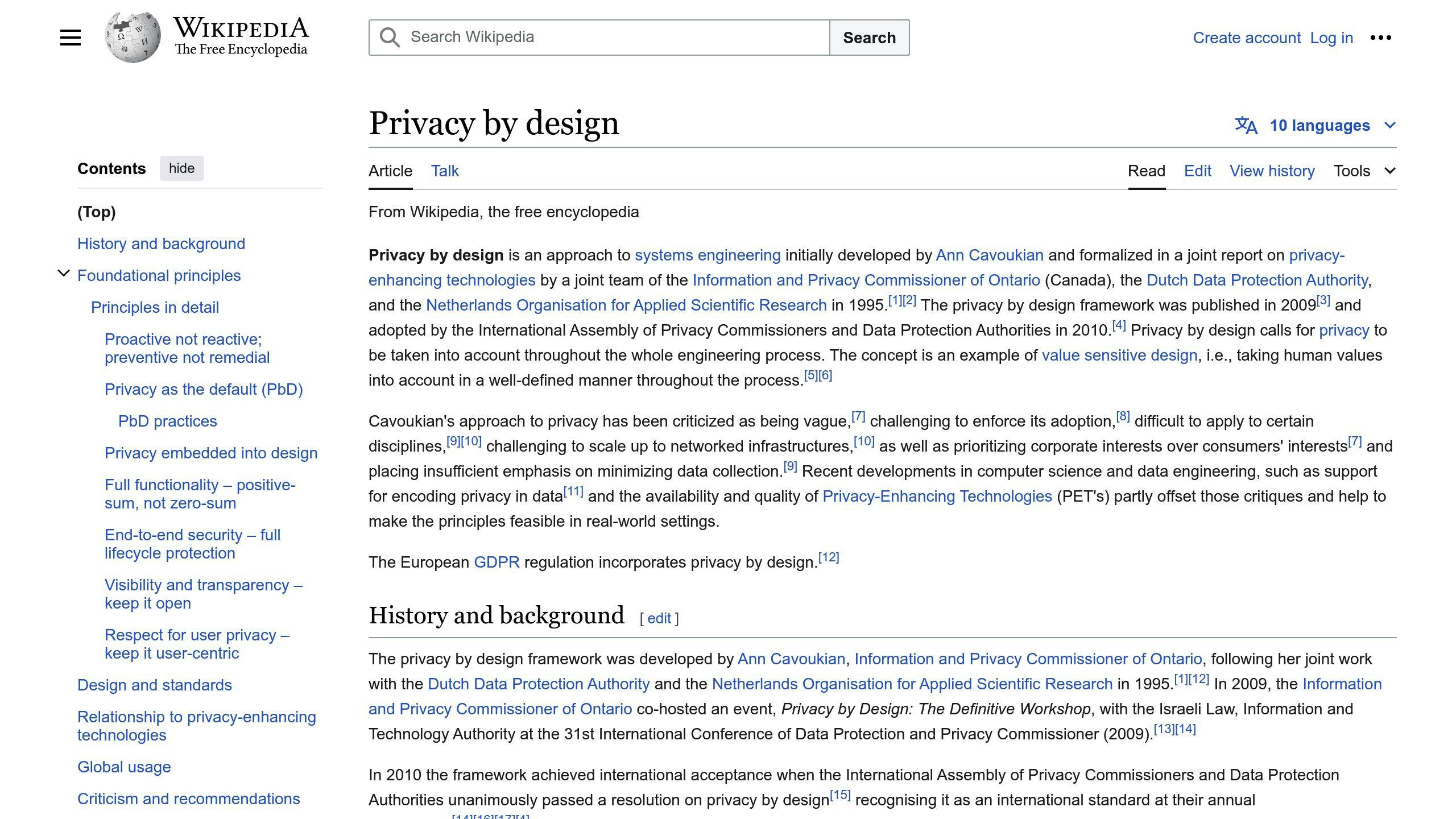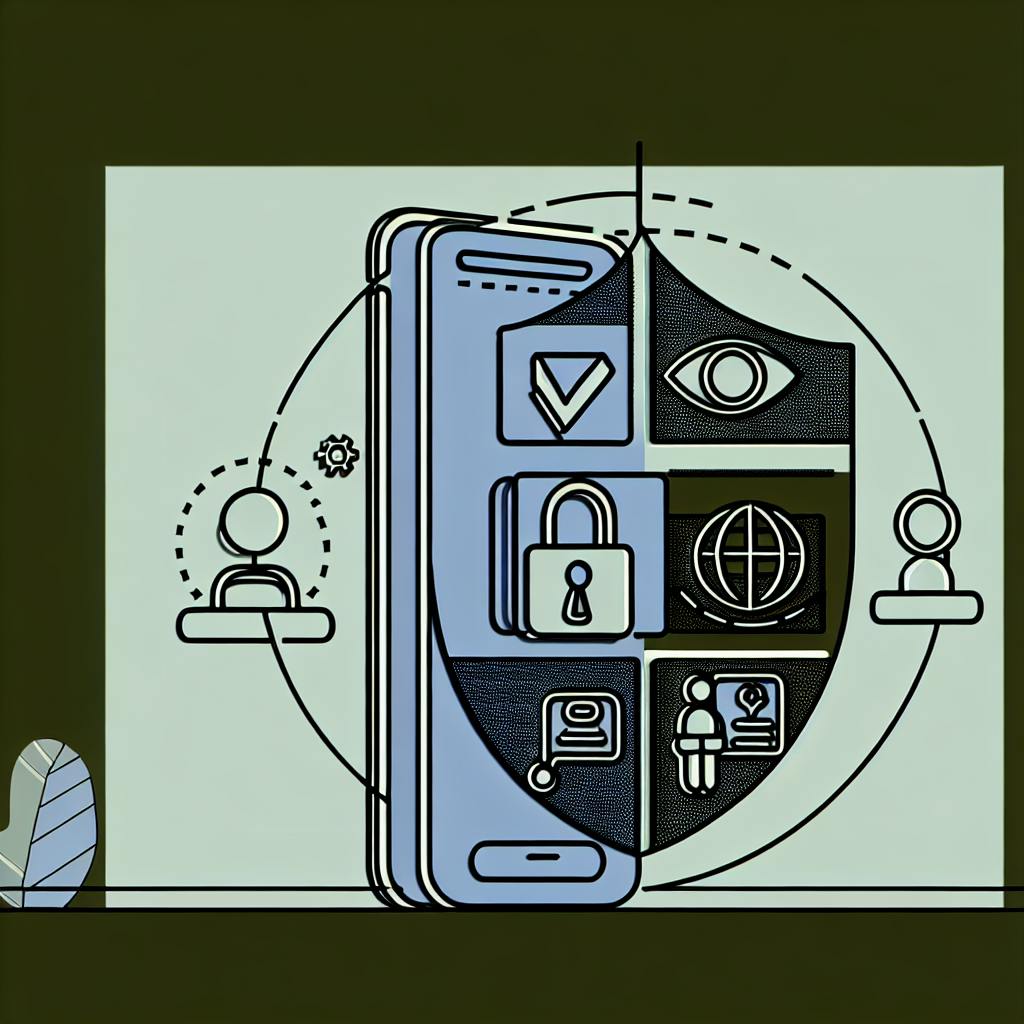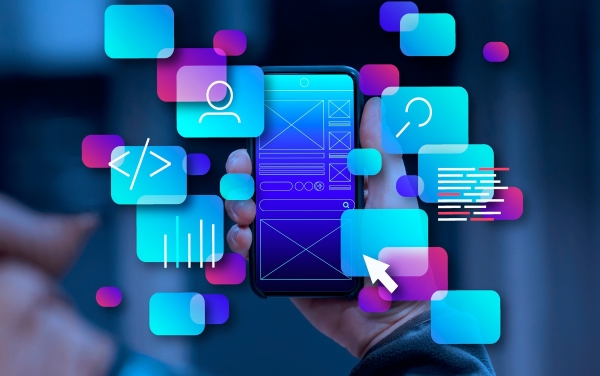Privacy by Design is a framework that integrates privacy and data protection into the core of software development. It emphasizes proactively addressing privacy risks and embedding privacy into the design process to create secure and user-friendly applications. The seven key principles are:
- Proactive not Reactive: Anticipate and prevent privacy issues before they occur.
- Privacy as the Default Setting: Prioritize user privacy without requiring user action.
- Embedded Privacy: Make privacy an integral part of the design process.
- Full Functionality: Ensure privacy does not compromise functionality.
- End-to-End Security: Protect user data throughout the entire data lifecycle.
- Visibility and Transparency: Be open and clear about how user data is collected and used.
- Respect for User Privacy: Prioritize user autonomy and control over personal data.
By following these principles, developers can create applications that prioritize user privacy, build trust, and comply with data protection regulations like GDPR.
PrincipleKey PracticesProactiveIdentify risks, implement preventative measures, prepare for incidentsDefault PrivacyCollect minimal data, use encryption and access controls, provide transparencyEmbedded PrivacyChoose privacy-friendly technologies, minimize data collection, robust securityFull FunctionalityBalance security and privacy requirements, privacy-friendly designEnd-to-End SecurityProtect data throughout lifecycle (collection, storage, transmission, access, deletion)Visibility & TransparencyClear policies, user control over data, accountability mechanismsRespect User PrivacyUser choices, avoid dark patterns, prioritize autonomy
By adopting a Privacy by Design approach, developers can create better products that respect user autonomy, protect privacy, and foster trust with users.
Related video from YouTube
1. Proactive not Reactive; Preventative not Remedial
The first principle of Privacy by Design emphasizes taking proactive measures to prevent privacy risks and data breaches before they occur, rather than reacting after the fact. This proactive approach is crucial in app development, where even a single data breach can severely damage user trust and your business reputation.
To achieve this, developers should:
Identify Potential Privacy Risks
Conduct thorough privacy impact assessments to identify potential risks associated with the data you collect, process, and store. Consider risks such as:
- Unauthorized access
- Data breaches
- Misuse of personal information
Implement Preventative Measures
Based on the identified risks, implement appropriate technical and organizational measures to prevent privacy violations. This may include:
MeasureDescriptionEncryption and AnonymizationProtect data in transit and at restAccess Controls and AuthenticationEnsure only authorized access to dataData MinimizationCollect only necessary dataSecure Coding PracticesImplement secure coding practices and regular security testing
Prepare for Incidents
While preventative measures can significantly reduce the likelihood of privacy incidents, it's essential to have robust incident response and business continuity plans in place. These plans should outline clear steps for:
- Detecting potential incidents
- Responding to incidents
- Recovering from incidents
By taking a proactive approach to privacy, app developers can build user trust, comply with data protection regulations, and mitigate the costly consequences of data breaches and privacy violations.
2. Privacy as the Default Setting
The second principle of Privacy by Design emphasizes the importance of making privacy the default setting in app development. This means that apps should prioritize user privacy without requiring users to take any action.
To achieve this, apps should:
- Collect only the necessary personal data
- Implement robust access controls and authentication mechanisms
- Use encryption and anonymization techniques to protect data
- Provide users with clear information about how their data is being used and shared
Benefits of Privacy by Default
BenefitDescriptionUser TrustUsers are more likely to trust apps that prioritize their privacyComplianceApps are more likely to comply with data protection regulationsData ProtectionPersonal data is better protected against unauthorized access and breachesReputationBusinesses can maintain a positive reputation by prioritizing user privacy
By making privacy the default setting, app developers can demonstrate their commitment to protecting user privacy and building trust with their users. This approach is essential in today's digital landscape, where user data is increasingly vulnerable to privacy violations and data breaches.
3. Privacy Embedded into Design
The third principle of Privacy by Design emphasizes integrating privacy into the design and infrastructure of systems and business practices. This ensures that privacy becomes an essential component of the core functionality being delivered, without diminishing functionality.
To achieve this, app developers should:
Choose Technologies that Prioritize Data Protection
Opt for technologies that inherently prioritize data protection, such as:
TechnologyDescriptionEncryptionProtects data in transit and at restPseudonymizationReplaces personal data with artificial identifiersSecure Data StorageProtects data from unauthorized access
Minimize Data Collection and Storage
Collect and store only the necessary personal data, and dispose of it securely once it's no longer needed.
Implement Robust Security Measures
Build strong security mechanisms throughout the data lifecycle, from collection and transmission to storage and deletion.
Design User-Friendly Privacy Controls
Make it easy for users to understand and manage their privacy settings within the product or service.
By embedding privacy into design, app developers can create products that are both privacy-protective and fully functional, ultimately building trust with their users.
4. Full Functionality—Positive-Sum, not Zero-Sum
The fourth principle of Privacy by Design emphasizes that privacy and functionality can coexist without compromising one for the other. This approach ensures that all legitimate interests and objectives are accommodated in a positive-sum manner.
To achieve full functionality, app developers should:
Balance Security and Privacy Requirements
Find a balance between security requirements, such as auditing all actions in the system, and privacy requirements, like keeping only a minimum amount of information about data subjects.
Security RequirementsPrivacy RequirementsAuditing all actions in the systemKeeping only a minimum amount of information about data subjects
Implement Privacy-Friendly Design
Design systems that prioritize privacy, without affecting security controls or causing performance impacts on other services. For example:
- Remove unnecessary information about data subjects from audit logs
- Move old logs to an archive tier to save costs
By adopting a positive-sum approach, app developers can create products that are both privacy-protective and fully functional, ultimately building trust with their users.
sbb-itb-8abf120
5. End-to-End Security—Lifecycle Protection
End-to-end security is a critical principle of Privacy by Design, ensuring that personal data is protected throughout its entire lifecycle, from collection to deletion. This principle involves implementing robust security measures to prevent unauthorized access, use, disclosure, modification, or destruction of personal data.
To achieve end-to-end security, app developers should:
Protect Personal Data Throughout Its Lifecycle
StageSecurity MeasureCollectionMinimize data collection and anonymize or pseudonymize data whenever possibleStorageUse robust encryption and secure storage mechanisms to protect data at restTransmissionUse secure communication protocols, such as HTTPS, to protect data in transitAccessEstablish strict access controls, including authentication and authorization mechanismsDeletionEnsure secure deletion of personal data when it's no longer needed
Provide Transparency and Accountability
- Provide users with clear information about how their personal data is collected, used, and protected
- Ensure that there are mechanisms in place for users to exercise their rights and hold the organization accountable for any breaches
By implementing these measures, app developers can ensure that personal data is protected throughout its entire lifecycle, building trust with users and minimizing the risk of data breaches.
6. Visibility and Transparency – Keep it Open
Visibility and transparency are crucial principles of Privacy by Design, ensuring that users are informed about how their personal data is collected, used, and protected. This principle involves being open and honest about data practices, providing users with clear and concise information about how their data is handled.
Make Your Processes Known
To achieve visibility and transparency, app developers should make their data collection and processing practices transparent to users. This can be achieved by:
- Providing clear and concise privacy policies that are easily accessible to users
- Using simple language to explain data practices
- Making information about data collection and processing easily available to users
- Providing users with options to control their data and make informed choices
Be Accountable
Visibility and transparency also involve being accountable for data practices. App developers should:
Accountability MeasureDescriptionEstablish mechanisms for users to exercise their rightsAllow users to access, correct, or delete their personal dataProvide clear information about how to access, correct, or delete personal dataMake it easy for users to understand their rights and optionsInvestigate and respond to user complaints and concernsTake user feedback seriously and respond promptly
By implementing these measures, app developers can build trust with users, demonstrate their commitment to privacy, and ensure that users are informed and in control of their personal data.
7. Respect for User Privacy – Keep it User-Centric
Respecting user privacy is a fundamental principle of Privacy by Design. It emphasizes the importance of prioritizing user privacy and control. This principle involves designing systems that respect user autonomy, provide transparency, and ensure that users have control over their personal data.
Empower Users with Choices
To respect user privacy, app developers should give users choices about how their personal data is collected, used, and shared. This can be achieved by:
- Providing clear and concise information about data collection and processing practices
- Offering users opt-in or opt-out options for data sharing
- Allowing users to access, correct, or delete their personal data
- Providing users with granular control over data sharing preferences
Prioritize User Autonomy
Respecting user privacy also involves prioritizing user autonomy and ensuring that users are not coerced or manipulated into sharing their personal data. App developers should:
Best PracticeDescriptionAvoid dark patternsDon't use deceptive design practices that manipulate users into sharing their dataEnsure transparencyProvide clear and transparent information about how user data will be used and sharedRespect user choicesDon't force users to share their data in order to use the app or service
By respecting user privacy and prioritizing user autonomy, app developers can build trust with users, demonstrate their commitment to privacy, and ensure that users are informed and in control of their personal data.
Conclusion
The 7 principles of Privacy by Design are crucial for ensuring secure and private data management in app development. By integrating these principles, developers can address privacy issues, enhance user trust, and comply with data protection regulations.
Key Takeaways
PrincipleDescriptionProactive not ReactiveAnticipate and prevent privacy issuesPrivacy as the Default SettingPrioritize user privacy without requiring user actionEmbedded PrivacyMake privacy an integral part of the design processFull FunctionalityEnsure privacy does not compromise functionalityEnd-to-End SecurityProtect user data throughout the entire data lifecycleVisibility and TransparencyBe open and clear about how user data is collected and usedRespect for User PrivacyPrioritize user autonomy and control
By adopting a Privacy by Design approach, developers can create better products that respect user autonomy and protect their privacy. This approach helps build trust with users and demonstrates a commitment to privacy.
In conclusion, the 7 principles of Privacy by Design are essential for any app development project that involves user data. By prioritizing user privacy and control, developers can create products that are both private and functional.
FAQs
What is privacy as default?
Privacy as default means that systems automatically protect users' personal data without requiring any action from the user. This ensures that privacy is the baseline, rather than an optional setting.
Which of the following are part of the seven principles of Privacy by Design?

The seven principles of Privacy by Design are:
PrincipleDescription1. Proactive not ReactiveAnticipate and prevent privacy issues2. Privacy as the Default SettingPrioritize user privacy without requiring user action3. Embedded PrivacyMake privacy an integral part of the design process4. Full FunctionalityEnsure privacy does not compromise functionality5. End-to-End SecurityProtect user data throughout the entire data lifecycle6. Visibility and TransparencyBe open and clear about how user data is collected and used7. Respect for User PrivacyPrioritize user autonomy and control
How do you demonstrate Privacy by Design?
To demonstrate Privacy by Design, organizations should:
1. Conduct Privacy Impact Assessments: Identify and mitigate privacy risks during the design phase.
2. Implement data minimization: Collect only necessary data for specific purposes.
3. Incorporate privacy controls and security measures: Protect user data throughout the entire data lifecycle.
4. Provide clear and transparent privacy policies: Detail data handling practices.
5. Offer user control: Provide consent management and data access/deletion options.
6. Regularly audit and assess privacy practices: Ensure compliance and continuous improvement.








